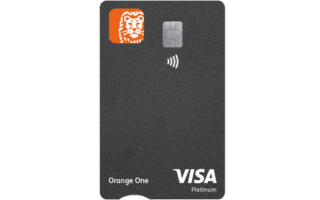Tips for Effectively Managing and Paying Your Credit Card Debts

Understanding Credit Card Debt Management in Australia
Credit card debt can impose a considerable financial strain on individuals and families across Australia. As living expenses rise—fuelled by factors such as housing costs, utilities, and the increasing prices of everyday goods—the temptation to rely on credit cards can lead to a cycle of debt that is difficult to escape. It’s essential to approach credit management with informed strategies to maintain financial health and enhance overall economic stability.
Create a budget: One of the most effective ways to take control of your finances is to develop a comprehensive budget. This involves accurately tracking your income and expenditures and categorising your spending to pinpoint areas where you can cut back. For example, you may identify unnecessary subscriptions or dining expenses that could be reduced. By setting clear spending limits and allocating a portion of your income specifically for debt repayment, you’ll develop a clearer financial roadmap that can significantly ease your credit burden.
Prioritise payments: It is advisable to focus on paying off high-interest credit card debts first. In Australia, credit card interest rates can range from 12% to over 20% annually. By directing extra funds towards the highest-rate accounts, you can reduce the total interest paid over time. This strategy, known as the avalanche method, can lead to considerable savings and quicker debt clearance, ultimately improving your overall financial health.
Consider balance transfers: Another effective strategy is to take advantage of balance transfer offers. Many credit card providers in Australia promote 0% interest balance transfer deals for an introductory period, which can last from 6 to 24 months. Transfer high-interest debt to a card with a lower rate to save on interest while you pay down the principal balance. However, be mindful of any balance transfer fees and the terms of the promotional offer to avoid incurring additional costs.
Set up automatic payments: Timely payments are vital not only to avoid late fees but also to maintain a positive credit score. Setting up automatic payments ensures that your minimum payment is made on time, reducing the risk of penalties and negative credit reporting. While it’s important to also pay more than the minimum whenever possible, automatic payments can provide peace of mind and help prevent the mistakes that lead to further debt.
By employing these strategies, you can effectively manage your credit card debt and mitigate the risks associated with financial distress. Knowledge of these tactics will not only enhance your creditworthiness but also lead to a more stable and secure financial future in Australia.
CHECK OUT: Click here to explore more
Strategic Approaches to Managing Credit Card Debt
Managing credit card debt is a critical undertaking for many individuals, especially in Australia where the cost of living can be high and economic fluctuations affect financial stability. The journey requires not only financial discipline but also strategic planning and informed decision-making. The following strategies demonstrate effective approaches that can help alleviate the burden of credit card debt and promote long-term financial well-being.
Track your expenses: Establishing a thorough record of your monthly spending is a powerful tool in debt management. By meticulously documenting every purchase and categorising these expenses, you gain essential insights into your spending habits, revealing where your money flows and how you might depend on credit cards. Utilizing budgeting tools, such as apps like Pocketbook or YNAB (You Need a Budget), can streamline this process. For instance, tracking discretionary spending, such as dining out or entertainment, can help identify unnecessary expenses that contribute to debt accumulation.
Regular reviews of your spending patterns can highlight areas for improvement. For example, if you notice frequent compulsive purchases that could easily be curtailed, this awareness can propel you to make more informed choices, ultimately leading to less reliance on credit cards. Crafting a budget that allocates funds for essential expenses while allowing for controlled discretionary spending can greatly enhance financial discipline.
Utilise the snowball method: This debt repayment technique prioritizes psychological motivation alongside financial logic. By focusing on the elimination of the smallest debts first, individuals can experience rapid success that fuels further efforts. Begin by listing all credit card debts from the smallest balance to the largest. While maintaining minimum payments on all cards, direct any additional funds toward the smallest debt until it’s fully paid. For instance, if you have a credit card with a $500 balance and another with $5,000, prioritizing the smaller amount can foster a sense of progress. Once the smallest debt is repaid, repeat the process with the next smallest debt, continuing this cycle. By celebrating small victories, individuals may find renewed motivation to persist on their debt repayment journey.
Review your credit card statements: Conducting regular examinations of credit card statements is crucial for maintaining oversight and control over your finances. This vigilance can help uncover discrepancies, unauthorized charges, or recurring subscriptions that may be draining your resources. By ensuring that all charges are valid, you protect yourself from potential fraud while maintaining an accurate understanding of your remaining balance.
Additionally, it is prudent to investigate opportunities for reducing costs associated with your credit cards. Negotiating lower interest rates with your credit card provider or cancelling cards that carry high annual fees can result in significant savings. For example, in Australia, some lenders may be open to negotiation if they believe they could lose a customer, which means a proactive discussion could yield a reduced interest rate.
Consider credit counselling: If the burden of credit card debt feels overwhelming, seeking help from a certified credit counsellor can provide much-needed relief and expert guidance. Credit counselling programs in Australia offer personalized advice tailored to individual circumstances and goals. These professionals can analyze your financial situation, advocating for sensible debt repayment plans that align with your budgetary capabilities. They can also provide education on effective financial management skills, thereby equipping you for a more secure financial future.
By integrating these strategies into your financial lifestyle, you can adopt a proactive approach to managing credit card debt. Cultivating financial discipline, utilizing effective repayment methods, conducting regular scrutiny of account statements, and seeking professional advice for challenging situations will not only aid in debt reduction but also bolster your overall financial health and resilience. Taking these steps will empower individuals to navigate their financial landscapes with confidence and strategic success.
SEE ALSO: Click here to read another article
Additional Strategies for Credit Card Debt Management
In addition to the previously discussed strategies, there are several other effective methods and considerations that can assist individuals in managing and paying down credit card debts. Employing these tactics can significantly enhance your financial management approach and pave the way towards a debt-free future.
Set realistic financial goals: Establishing clear and achievable financial goals is pivotal when addressing credit card debt. Goals provide a concrete roadmap and a sense of direction in your debt repayment journey. Consider utilising the SMART criteria—Specific, Measurable, Achievable, Relevant, and Time-Bound—to set goals, such as “I plan to pay off $3,000 of my credit card debt in the next six months.” This level of specificity can bolster motivation and accountability as you work towards these objectives.
Create an emergency fund: While it may seem counterintuitive to save while in debt, establishing a modest emergency fund is a crucial buffer to avoid further reliance on credit cards for unexpected expenses. Financial experts recommend aiming for an initial goal of $1,000 as a safety net. This fund will provide a cushion during emergencies, preventing the need to incur additional debt. Over time, as financial stability improves, consider gradually increasing this fund to cover three to six months of essential expenses.
Shift your spending habits: Adjusting your spending habits can effectively influence your debt repayment process. Implement strategies such as the 24-hour rule before making non-essential purchases, which involves waiting a full day before purchasing. This practice allows you to assess the necessity of the item and can deter impulsive buying behaviours. Moreover, transitioning to cash-only purchases for daily expenses can significantly reduce reliance on credit cards, allowing for greater control over finances.
Reassess your payment approach: Evaluate your credit card payment strategy periodically to ensure you are maximally efficient. Many consumers may benefit from the practice of making biweekly payments rather than the traditional monthly payments. This approach involves paying half the total monthly payment every two weeks, resulting in 13 full payments made in a year rather than 12. Such a strategy can reduce the overall interest paid and accelerate debt reduction. Australian cardholders should verify with their bank’s policies to confirm whether such a payment schedule is permissible without incurring extra fees.
Leverage balance transfers wisely: Balance transfer credit cards can offer lower introductory interest rates, creating a potentially smart way to manage existing credit card debts. However, these transfers should be approached with caution. It is important to thoroughly research terms and conditions, including fees and length of the promotional period. For example, many balance transfer offers in Australia come with zero percent interest for a fixed timeframe, which can ease financial pressure when managed appropriately. Nevertheless, it is crucial to avoid accumulating new debt on the old card, as overspending can defeat the purpose of the transfer.
Communicate with creditors: If circumstances become difficult, communicating with creditors can often be beneficial. Many credit card companies in Australia have hardship programs or alternative repayment plans available for individuals facing financial challenges. Proactively reaching out and explaining your situation can lead to modified payment terms, temporary rate reductions, or other supportive measures that can alleviate immediate pressure.
By incorporating these additional strategies into your credit card management practices, you can enhance your overall financial well-being. Setting clear goals, establishing an emergency fund, adjusting spending behaviours, and leveraging payment strategies will not only aid in effective credit card debt management but also improve your financial literacy and resilience over time.
CHECK OUT: Click here to explore more
Conclusion
In conclusion, effectively managing and paying your credit card debts is a multi-faceted process that requires strategic planning, discipline, and a proactive mindset. To foster a sustainable approach to debt repayment, it is essential to set realistic financial goals that guide your efforts and create a clear path toward financial freedom. Establishing an emergency fund can also play a pivotal role in mitigating unexpected expenses that might otherwise necessitate reliance on credit cards, thus preventing a cycle of debt accumulation.
Furthermore, by actively shifting your spending habits and making conscious choices about purchases, you can significantly reduce unnecessary expenses, allowing more resources to be directed toward debt repayment. It is wise to reassess your payment approach regularly, perhaps by adopting biweekly payment strategies, which can lead to substantial interest savings and expedited debt clearance. Utilizing balance transfer options judiciously can also provide short-term relief and help manage high-interest debts effectively, provided such transfers are executed with caution and thorough research.
Finally, remember that maintaining open communication with creditors can yield valuable support during challenging periods, as many financial institutions offer programs tailored to assist customers in distress. By integrating these practical strategies into your financial routine, you will not only gain control over your credit card debts but also elevate your overall financial literacy, setting a foundation for a stable and secure financial future.

Beatriz Johnson is a seasoned financial analyst and writer with a passion for simplifying the complexities of economics and finance. With over a decade of experience in the industry, she specializes in topics like personal finance, investment strategies, and global economic trends. Through her work, Beatriz empowers readers to make informed financial decisions and stay ahead in the ever-changing economic landscape.





